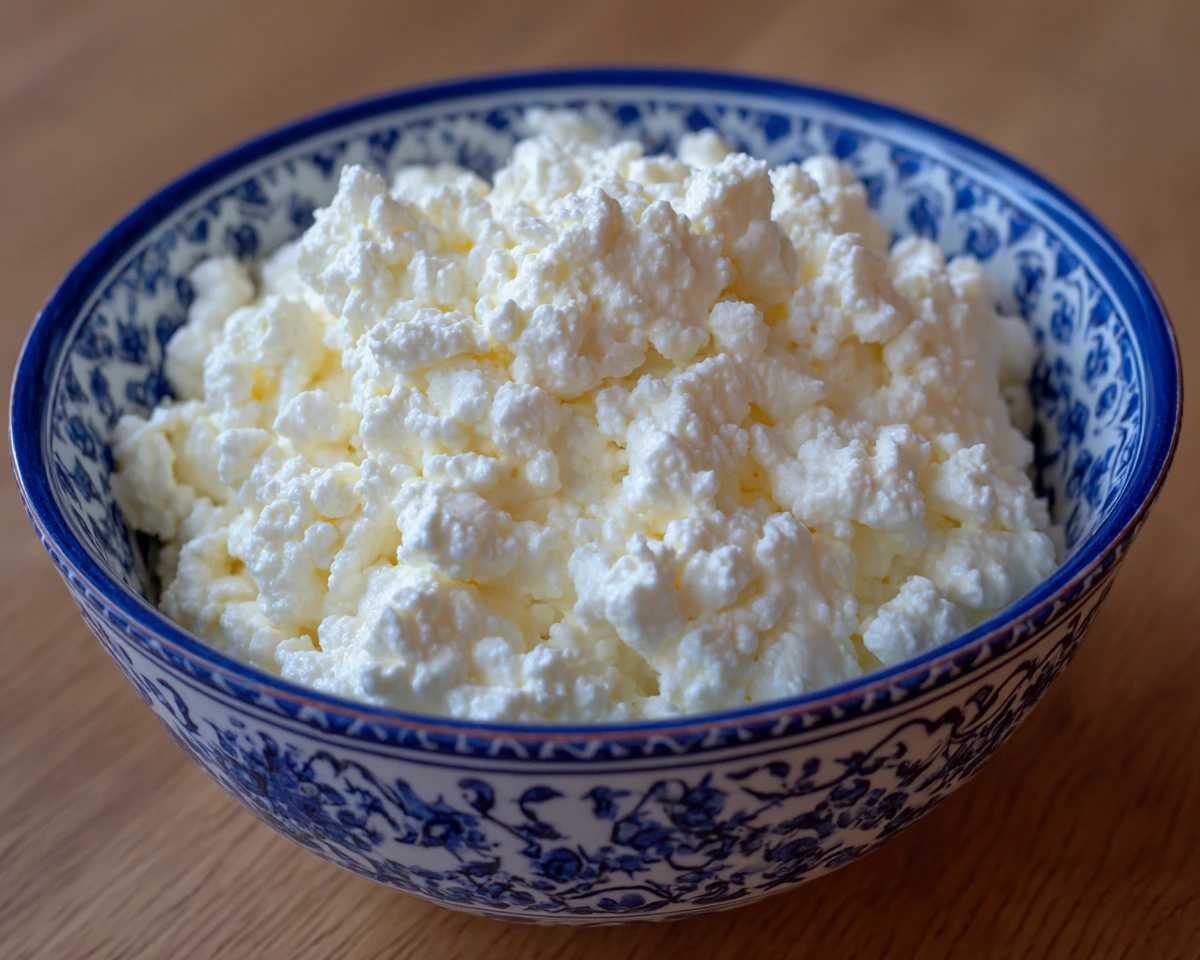Large curd cottage cheese delivers bite, creaminess, and subtle flavor. It’s more than a side—this protein-packed favorite deserves the spotlight.
Table of Contents
The Story Behind Large Curd Cottage Cheese
From Asheville to Portland: My Journey with Curds
Large curd cottage cheese has followed me from the South to the Pacific Northwest. I grew up watching it melt into baked grits and layered into casseroles. Years later in Florence, I’d spoon it cold straight from the tub between pizza shifts. It’s humble, filling, and versatile.
Now at my Portland restaurant, I bring that same ingredient into elevated plates—think warm bowls, smoky roots, and unexpected textures that still feel familiar.
Why Large Curd Cottage Cheese Belongs in Modern Cooking
Most people think cottage cheese is bland or boring. That’s because they haven’t met large curd.
- Bigger curds = bolder texture
- Creamy but mild, perfect for pairing with herbs or fruit
- Doesn’t break down easily when heated or baked
- Naturally high in protein, great for post-workout meals
You’ll taste the difference in recipes like our Sweet Potato Protein Bowl or this Cottage Cheese Sweet Potato Bowl. In both, the curd texture brings balance and structure—no mush here.
What Is Large Curd Cottage Cheese?
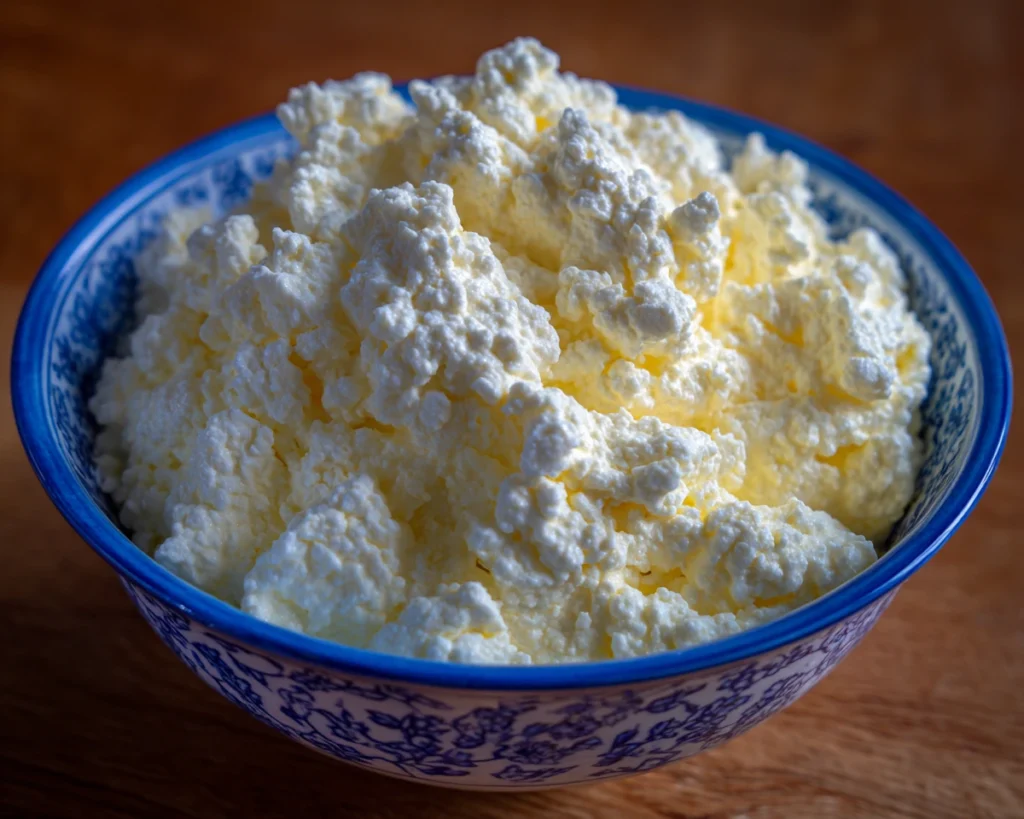
A Closer Look at the Curds
Large curd cottage cheese is made using a different type of rennet, which results in curds that are visibly bigger—about the size of small peas or larger. The flavor is smooth and slightly tangy, but the texture is what truly sets it apart.
Unlike small curd, the larger pieces stay intact. That makes it ideal for mixing into both savory and sweet recipes. Whether you stir it into warm bowls or layer it into a bake, large curd holds up.
- Texture: Thick, chunky, and spoonable
- Flavor: Creamy, clean, and neutral
- Usage: Great for baking, snacking, or topping toast
In many classic Southern dishes, large curd cottage cheese shows up in family recipes—just like in my Asheville roots.
Common Uses in Everyday Meals
Wondering how to use it beyond breakfast? Here’s where large curd cottage cheese shines:
- Fold into scrambled eggs or savory oats
- Use as a topping for roasted vegetables
- Spread on toast with black pepper and hot honey
- Bake into lasagnas or grain bakes for texture
You can also add it to bowls like our High Protein Taco Bowl, where bold texture matters just as much as flavor.
Large Curd vs. Small Curd: What’s the Difference?
It’s All in the Coagulation Process
The main difference between large curd and small curd cottage cheese lies in how the milk is curdled. Large curd is made with rennet, which forms bigger, looser curds. Small curd uses a lactic acid process that results in tighter, finer pieces.
Here’s a quick comparison:
| Feature | Large Curd | Small Curd |
|---|---|---|
| Coagulant | Rennet | Lactic acid |
| Curd Size | Larger, chunkier | Smaller, smoother |
| Best For | Bakes, bowls, layering | Spreads, dips, blending |
Which One Should You Use?
If you’re after texture and structure, go for large curd cottage cheese. It holds its shape and pairs well with savory dishes. Small curd blends more easily but can get lost in baked or warm recipes.
In our Cottage Cheese Sweet Potato Bowl, large curd gives it a toothsome feel you’d never get with small curd. It’s that detail that makes a good bowl great.
Why You Might Be Struggling to Find Large Curd Cottage Cheese
Temporary Shortages in the Dairy Aisle
Recently, you may have noticed large curd cottage cheese disappearing from store shelves. You’re not alone—it’s happening in multiple regions.
Here’s why it’s been harder to find:
- Regional demand shifts have caused brands to reduce SKUs
- Supply chain issues affected curdling agents like rennet
- Retail shelf space is often given to smaller curd or blended styles
Some stores also prioritize diet-friendly formats, which usually use smoother, small curd options. That means large curd sometimes gets cut—even if it offers more flavor and texture.
Where to Look and What to Buy Instead
If your local grocery doesn’t carry large curd, here are a few strategies:
- Check co-ops or specialty markets
- Look for brands like Daisy or Friendship, which still offer it
- Order online if available in refrigerated packaging
As an alternative, you can press small curd gently in cheesecloth to mimic the chunkier texture—especially in recipes like our High Protein Taco Bowl where structure matters.
Easy Large Curd Cottage Cheese Bowl
A Warm, Savory Bowl with Southern Roots
When I want something nourishing, fast, and texturally satisfying, this is my go-to. This bowl blends roasted veggies, large curd cottage cheese, and a smoky chili oil drizzle.
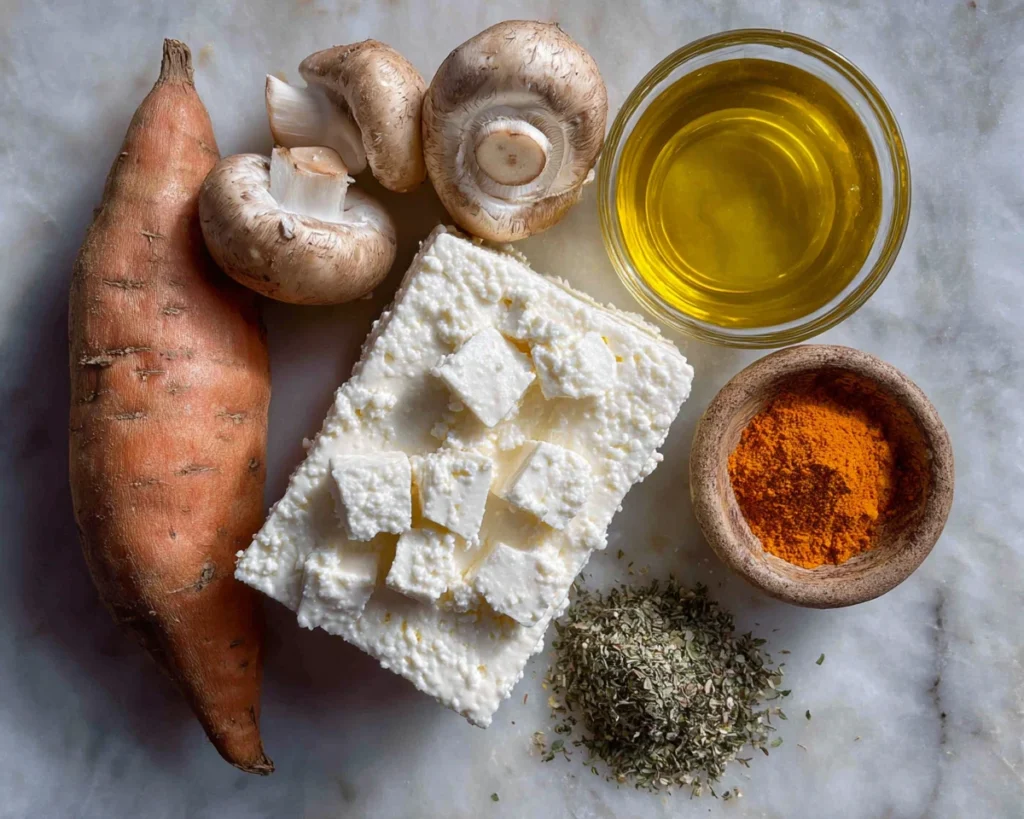
You’ll love the contrast: cool creamy curds against warm sweet potatoes and earthy mushrooms.
Ingredients
- ½ cup large curd cottage cheese
- 1 small sweet potato, cubed
- ½ cup mushrooms, sliced
- 1 tbsp olive oil
- Pinch of smoked paprika
- Salt and pepper to taste
- Chili oil or hot honey (optional)
- Chopped scallions and cilantro, for topping
Instructions
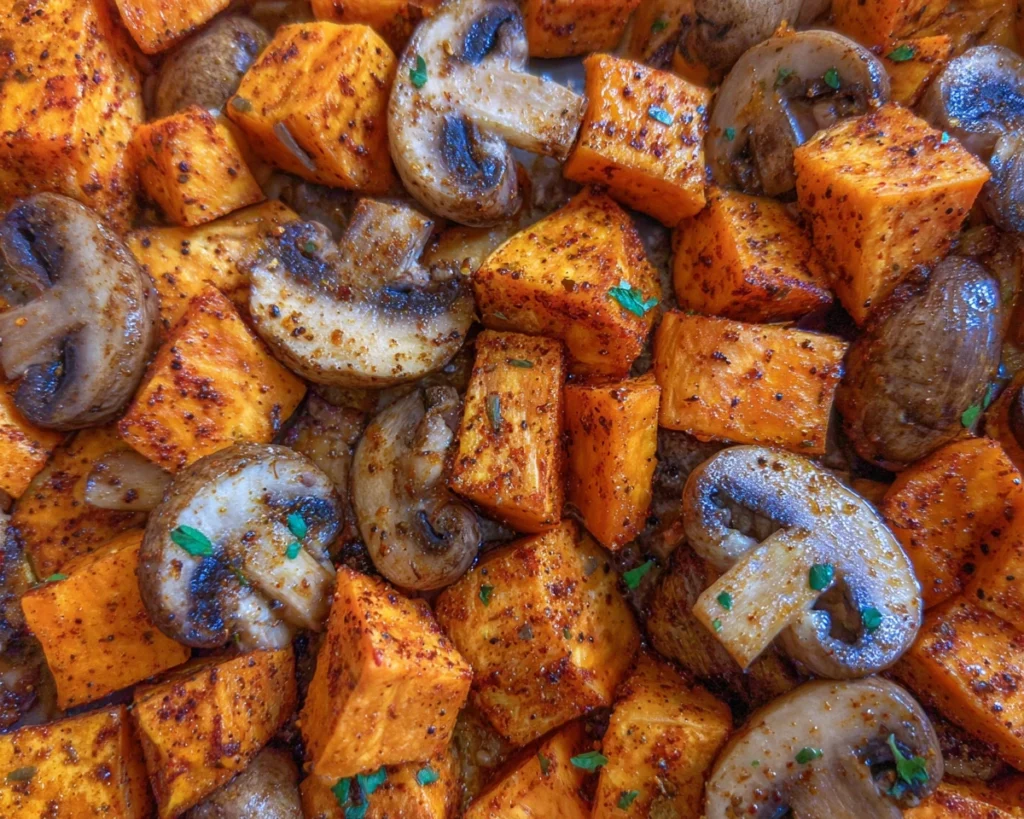
- Preheat oven to 425°F.
- Toss sweet potato and mushrooms with olive oil, paprika, salt, and pepper.
- Roast on a sheet pan for 20–25 minutes, flipping halfway.
- In a bowl, spoon cottage cheese on one side, warm veggies on the other.
- Drizzle with chili oil or hot honey. Top with fresh herbs.
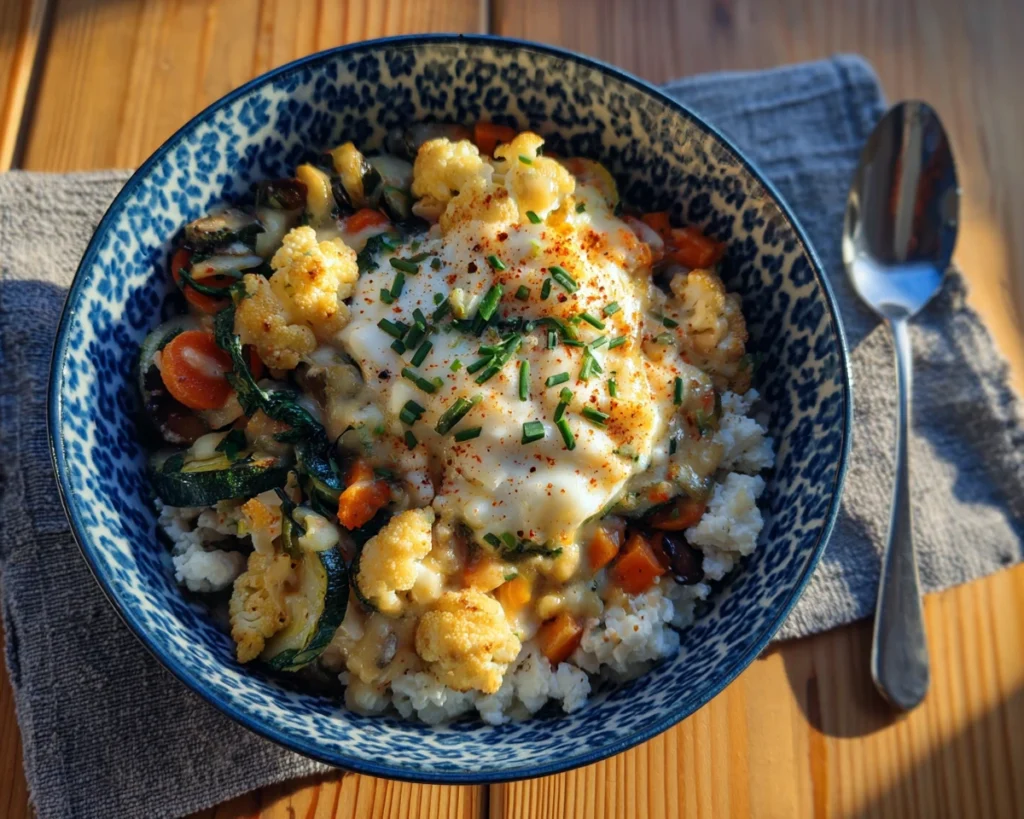
This bowl works as a quick lunch, high-protein snack, or even a post-workout meal. Want more high-protein bowls? Try our Sweet Potato Protein Bowl next.
Print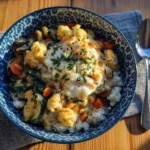
Large Curd Cottage Cheese
- Total Time: 30 mins
- Yield: 1 bowl 1x
- Diet: Vegetarian
Description
A warm, savory bowl combining large curd cottage cheese with roasted sweet potatoes, mushrooms, and bold seasoning.
Ingredients
- ½ cup large curd cottage cheese
- 1 small sweet potato, cubed
- ½ cup mushrooms, sliced
- 1 tbsp olive oil
- Pinch smoked paprika
- Salt and pepper to taste
- Chili oil or hot honey (optional)
- Scallions and cilantro for topping
Instructions
- 1. Preheat oven to 425°F.
- 2. Toss sweet potato and mushrooms with olive oil, paprika, salt, and pepper.
- 3. Roast for 20–25 minutes on a sheet pan, flipping halfway.
- 4. Spoon cottage cheese into a bowl.
- 5. Add warm roasted veggies on the side.
- 6. Drizzle with chili oil or hot honey and top with fresh herbs.
Notes
- Swap mushrooms with broccoli or zucchini.
- Add quinoa for extra protein.
- Prep Time: 5 mins
- Cook Time: 25 mins
- Category: Main Dish
- Method: Roasting
- Cuisine: Modern American
Nutrition
- Serving Size: 1 bowl
- Calories: 340
- Sugar: 6g
- Sodium: 450mg
- Fat: 16g
- Saturated Fat: 7g
- Unsaturated Fat: 8g
- Trans Fat: 0g
- Carbohydrates: 28g
- Fiber: 5g
- Protein: 21g
- Cholesterol: 30mg
Keywords: large curd cottage cheese, savory bowl, high protein lunch
FAQs About Large Curd Cottage Cheese
What is large curd cottage cheese?
Large curd cottage cheese is a creamy, high-protein dairy product made by adding rennet to milk, which forms large, chunky curds. It’s less processed than small curd varieties, with a mild flavor and a thicker, spoonable texture.
Why is there a shortage of large curd cottage cheese?
The shortage comes down to production choices. Many brands prioritize small curd or whipped styles due to higher demand and wider use in diet-friendly marketing. Supply chain disruptions also impacted rennet availability in some areas.
Is Daisy cottage cheese large curd?
Yes, Daisy offers a large curd cottage cheese. It’s known for its clean ingredients and rich, creamy texture—making it a favorite among people who want chunkier curds without unnecessary additives.
What is the difference between a large curd and a small curd?
Large curd uses rennet to form bigger, more defined curds. Small curd uses lactic acid, which creates finer curds and a slightly tangier flavor. Large curd holds up better in warm dishes and offers a more satisfying texture.
Conclusion
Large curd cottage cheese is more than just a nostalgic ingredient—it’s a high-protein, texture-rich, flavor-friendly staple that belongs in any modern kitchen. From warm bowls to baked sides, it offers balance, body, and versatility.
If you’ve overlooked it before, now’s the time to give it a fresh shot. Explore local brands, build simple bowls, and experiment with sweet and savory combos.
For more ideas, check out some of my favorite flavor pairings and weekly bowls on my Pinterest or explore more meal-prep recipes on Skinytaste.net—a site I admire for fresh, balanced eating done right.
